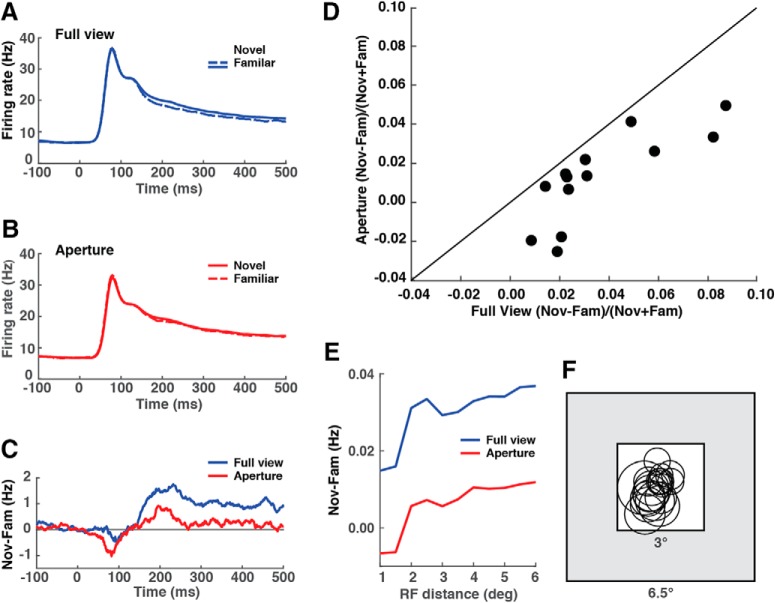Figure 4.
Familiarity suppression depended in part on image content in the periphery of the image frame. A, Population responses to novel and familiar images presented in full view in the 6.5° × 6.5° image frame. B, Population responses to the same images cropped down to the parts visible through a 3° × 3° square aperture centered on the image frame. C, Familiarity suppression was reduced on aperture trials compared with full-view trials. D, This effect occurred in all 13 such tests. E, Familiarity suppression might have been reduced on aperture trials because the receptive fields of some neurons lay outside the aperture with the consequence that they were not effectively stimulated. To control for this possibility, we repeated the analysis on subsets of neurons in which the receptive field center was displaced by no more than a stipulated distance from the center of the image frame. As the stipulated distance was reduced in 0.5° decrements, the tendency for familiarity suppression to be muted on aperture trials as compared with full-view trials persisted, in support of the interpretation that familiarity suppression depended on image content outside the classic neuronal receptive field. Horizontal axis: upper threshold on distance of receptive-field center from image-frame center. Vertical axis: (N − F)/(N + F), where F and N are mean responses to familiar and novel images, respectively. F, Receptive fields of neurons with receptive-field centers no more than 1° from the image-frame center. This most tightly constrained set of neurons yielded the values represented by the leftmost points on the curves in E.

